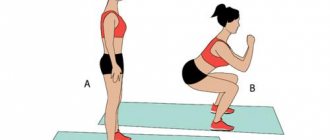General rules for working with a computer
Electronic devices have become such an integral part of human life that it is no longer possible to imagine how people used to cope without them.
With the development of technology in this area, people spend more and more time in front of the monitor, doing work and brightening up their leisure time. Naturally, such a lifestyle cannot but affect eye health. Let's figure out what measures need to be taken to reduce the load on the visual system, how to create optimal working conditions, avoid the occurrence of eye pathologies caused by long periods of time spent at the computer, and consider a series of simple exercises designed to relieve eye fatigue. Whole methods of proper work have been compiled that help to significantly reduce the load on the body. They contain a set of instructions for arranging the work area, requirements for furniture, peripheral devices, premises, and also give recommendations on how the body is positioned during work. The key points are as follows:
- the room should be well lit, equipped with a ventilation system, or, even better, air conditioning;
- the chair must be equipped with a backrest;
- the working area of the table is at least 50 cm deep;
- input devices (keyboard and mouse) are ergonomically designed;
- It is highly desirable to have a modern video card and monitor.
Why does using a computer make your eyes tired and sore?
Unpleasant sensations in the visual apparatus are caused by overwork of the eye muscles. There are several reasons for this:
- physiological characteristics. Human vision is adapted to perceive a three-dimensional image, it contains depth, and the monitor image is two-dimensional, prolonged viewing of which leads to a shift of the focus point beyond the plane of the screen. In an attempt to maintain the usual clarity, the body unconsciously makes great efforts, straining the eye muscle;
- the location of the device relative to the viewer. The eye is designed in such a way that a comfortable field of vision is considered to be vision of objects in front, with a slight downward slope. If the top edge of the monitor is above eye level, then the image “falls out” of the natural range and forces you to actively use the eye muscles;
- glare. Once in the work area, they reduce the contrast of the picture, forcing the visual apparatus to function under heavy loads;
- screen refresh rate. Older monitor models used low image change speeds, about 50-60Hz, which greatly affected eye fatigue. Modern devices do not have this drawback, but discomfort is still felt at the level of peripheral vision;
- Constantly moving your gaze from the sheet of paper to the screen. Increases the load on the extraocular muscles, tiring them.
| Statistical observations have proven the fact that when people look at the monitor they blink less often, the mucous membrane does not receive the required amount of moisture and dries out, creating the feeling of a speck of debris. |
Proper organization of a computer workplace
To avoid future vision problems, you need to properly arrange the space where the computer is installed. A few simple recommendations on how to do this:
- The lighting of the monitor and table should be sufficient and uniform; it is advisable to use incandescent lamps with warm emission spectra;
- the screen must be kept clean, not allowing dust and other dirt deposits to accumulate on it;
- set the maximum allowed image refresh rate;
- position the monitor so that its upper plane is slightly below eye level;
- avoid “sunbeams” in the visibility zone, use a screen with anti-glare coating;
- the distance from the viewer should be at least 50-70 cm.
Rules for working at the computer
Following these simple recommendations, which, unfortunately, are ignored by most, will allow you to maintain your vision at the same level:
- do not spend time watching the monitor in pitch darkness;
- blink more often, give the visual apparatus the opportunity to moisturize and rest;
- maintain uniform lighting of the work area;
- take a 10-15 minute rest every hour;
- During rest, do not neglect to do several exercises for the entire muscle group: raising and lowering your arms, bending to the sides and forward, jumping, squats.
Short exercises should be given special importance; work on a computer is sedentary, does not imply increased physical activity, and as a result leads to serious disorders in the body.
Eye exercises when working on a computer
Physiotherapists have created a large number of complexes designed to relieve tension and fatigue of the visual apparatus. They will be discussed in detail below. Now let’s look at general recommendations that improve blood supply to the eye and strengthen the extraocular muscles:
- to relieve stress and hydrate – blink frequently for a couple of minutes;
- open and close your eyes every 3-5 seconds. to action;
- press lightly on the eyelids;
- move your gaze from distant objects to nearby objects, focusing your gaze for five seconds.
Gymnastics for the eyes when working at a computer is an effective way to prevent visual impairment. Let's look at well-known techniques.
Palming
This exercise was invented by ophthalmologist William Bates. The essence of the training is to relax the eye by doing the following:
- by rubbing your hands together, warm them up;
- Close your eye sockets with your palms, fingers should cross in the forehead area;
- feel the darkness;
- After removing the brushes, feel the temperature difference without looking;
- Close your eyes tightly and slowly open your eyelids.
A simple exercise will restore the brightness of color perception and clarity of vision.
Through my fingers
This training allows you to quickly and effectively relax your visual apparatus and relieve unnecessary tension. It is recommended to do it several times during the day, in moments of rest. The order of execution is as follows:
- place your hands in front of your face, fingers slightly open like a fan;
- make 10-15 turns of your head, without fixing your gaze on anything, but as if looking through an obstacle;
- try not to strain and keep your breathing even.
Writing with your nose
This exercise is universal because, in addition to the eyes, it also relieves fatigue from the neck muscles. After all, tension in it disrupts blood circulation and nutrition of the organs of vision. Follow these steps:
- relax, and with your eyelids closed, imagine that the tip of your nose is a pencil;
- try writing them a letter, a whole word, or drawing a simple picture.
Moving your eyes to the sides
Visual gymnastics is very simple in technique; you need to move your gaze in a horizontal plane, and then from top to bottom. The only thing worth noting is that you need to do it with pleasure, without allowing the muscles of the visual apparatus to strain. Do the workout 15-20 times. To avoid getting dizzy, pause after five repetitions.
Exercise "Big Circle"
The head, when performing this activity, should be motionless. Make orbital movements with your eyes. To simplify, imagine a ball, or say, a watch dial. Lead your gaze along its circumference, first in one direction, then in the opposite direction. Rest for a few seconds, repeat, but this time complicate the execution, stop and fix your gaze on each digit of the clock. When finished, blink slowly.
Eye massage
In addition to eye exercises, it is important to do a massage when working at a computer. Close your eyes, relax. Place the pads of your index fingers on the inner corner of your eye.
Then, without lifting your finger, make circular movements with the tip of your finger in one direction, then in the other direction. Do the same exercise with the outer corner of the eye.
Lightly tap the pads of your index fingers on your closed eyelids.
(top and bottom). They are made as if describing a semicircle from the outer corner of the eye to the inner corner and vice versa. Apply light pressure on the eyeballs with eyes closed.
Carrying out such a massage is combined with performing gymnastics for the eyes.
Video text
Gymnastics on the computer. ▶











